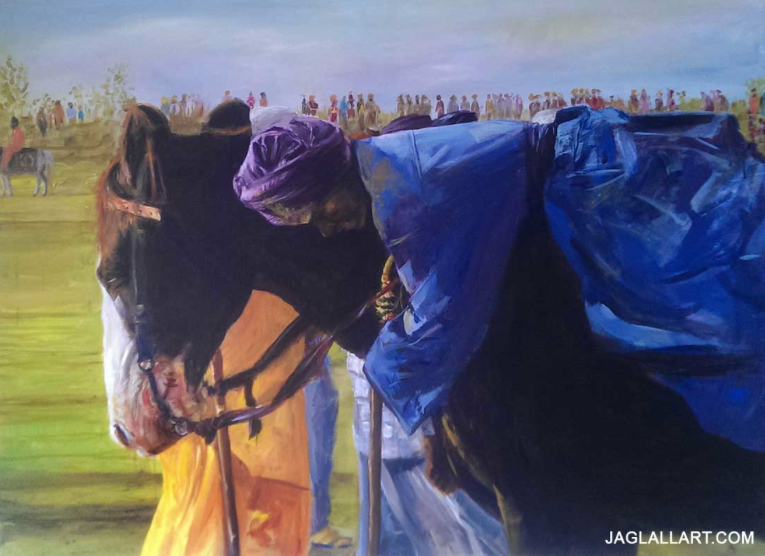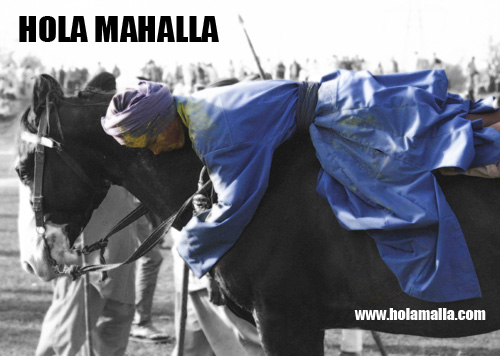On Tuesday the 9th of June, I attended a panel discussion called “Religious Docs: Who Needs Them?" at the Sheffield Documentary Festival. The panel was put together by the Sandford St Martin Trust and an audio recording of the session can be heard here. On the panel was Abdul-Rehman Malik from Insight Film Festival, Martin Davidson from the BBC and Peter Well from CTVC. Roger Bolton from Sandford St Martin and BBC Radio 4's Feedback show chaired the panel.
As a filmmaker I recently finished the film 'Hola Mahalla: The Forgotten Festival' about a Sikh festival, so naturally I was intrigued by the event.
It was a lively discussion between the panelists with various topics covered from TV shows, media and religious topics overlapping. Martin Davidson had a chance to address the recent Daily Mail headlines about the BBC dropping religion from its remit. He insisted it wasn't.
I was there as a filmmaker and to ask first hand what the BBC was doing to address the lack of programming that was available about minority religions.. So at 49 minutes and 29 seconds I had the following exchange.
DS: I'm a filmmaker making Sikh documentaries and I've tried to engage with the different broadcasters over the years, and failed. The issue that I have at the moment is that my community is rarely represented on the screen and also other minority religions aren't really represented. What are you guys actually doing to engage with my community and other minority religions.
Roger: Can I just ask you, are you a documentary filmmaker who happens to be a Sikh or a Sikh documentary maker?
DS: Both. I address other subjects as well, but I feel as though the lack of content coming from broadcasters needs to be addressed. If they're not going to do it, other people need to step up and start creating content.
Roger: I don’t know what percentage of the population is Sikh, is it one percent or something like that?
Martin: I hear that. The two obvious answers again, as a floor not a ceiling, would be at the BBC1 we cover festivals in rotation and Sikh festivals would fall into that.
Secondly the Sunday morning programs we do, the discussion programs Sunday Morning Live and the Big Question series will often have Sikh panellists who are involved in the debates. To go a step beyond that, we're into the world of the usual documentary criteria which is: is the element of Sikh life in Britain or anywhere in the world that you want a light shone on, is the light you're shining on it going to offer enough that is compelling to a wider audience? It will be a requirement that it speaks to certainly Sikhs but it speaks again, the broadcast question again the conversation we would have the straight forward one we would have with anyone pitching a documentary which is 'Whats the story here?' 'Whats the case that you're making for why it needs to be commissioned?' and 'What is compelling enough about it as an idea to justify displacing all the other ideas and competition?'
DS: What I find interesting about that is, I as a person of colour can connect with different stories, lots of different stories that aren't a direct representation of me and that just seems like a bit of a cheap response.
Roger: Are you driven primary by the belief that there are things about the Sikh community which have not been explained to the wider world or are you simply saying 'I am a Sikh documentary maker who wants to make documentaries about a wide range of things but I'm penalised because I'm a Sikh. Which one, both?
DS: An element of both. What I see is, we have Christian documentaries, Jewish documentaries, Muslim documentaries and rightly so but beyond that we don't really have any other types of documentaries or programming for example 'In the footsteps of...' whichever faith. We don’t have anything beyond the three main religions. I watch other documentaries and I would be willing to watch any other documentaries and I find it a slightly dissatisfying that the response...
Roger: Can I speak to Peter about this. I think...
Martin: Let me give you one example of a project that we are actively considering. This is one of the things I was responsible for last year with a lot of our coverage marking the anniversary of the first world war, so Im talking to two Indian filmmakers who want to do a big film for probably either 2016 or 17, which is going to be taking a whole body of Sikh letters home, written by Indian soldiers who arrive, well first of all in Mesopotamia on the western front. Whose letters and experiences when they get back to India would trigger some of the early days of what would become the independence movement. We will do that, and one of the ideas of that will be the music and the reading of the letters will be done in the original language. So thats something. Why does that interest me, not at all because I thought 'good, that’s another faith community I can now forget about'. What interested me about that was exactly what I was saying by way of criteria. The body of letters. The experience at the heart of that story is really compelling and interesting and role after the first world war, of those men going back to their villages I thought was really really interesting historically. Now thats historical, now you may go 'that’s fine but it’s still dodging the issue of contemporary world'. My answer to that would be it is true, there is something compelling actually about the documentary filmmaker who can get into a closed world. We do find that absolutely interesting. I'm thinking of that great film about the Jewish community, what was it Volvo City? Got in there and I'm not a great student of the finer nuances of orthodox Judaism but I was absolutely riveted to see that that world, because I've seen members of that community. I've seen them in everyday life, and now you mentioned I have no idea what kind of home and social life that involves, so thats a big coup. So yes, what you shouldnt do in the same way the rhetoric I've used if the stories big up, I realise a lot of peoples eyes and glaze over at that answer but more productively I would say if you can bring 'I have got access to a Sikh community that will involve sequences because I have the trust of people I am filming, never been on Birtish television before. It's amazing that is a really powerful documentary calling card, because we are fascinated by peoples worlds. Sikhs are visible, you do, like a lot of communities peak curiosity. What are your lives like? What is a Sikh view of the world? How does that community work?
Roger: Abdul wants to come in.
Abdul: I grew up in Canada, in west Toronto where there’s a big Sikh community and there was a lot of coverage and program making around Sikhs because Sikhs were considered dangerous around the 1980s. “Become a dangerous community” in inverted commas and you get noticed. That's the crass reality of commissioning. But with my Insight hat on, we should talk because I think for small festivals like us it’s a golden opportunity for us to program strands and bring in diverse voices and also the internal diversity within faith communities and talk about them in a way broadcasters won’t be able to and to be genuine and authentic because they won’t be able to because of their size and their limitations of their size.
It was an interesting experience and I'm sure I'll write about it all further at some point in the future.
I hope the BBC and others actually start making documentaries about Sikhs and other minority religions. We watch TV too and it's about time we had some representation.














